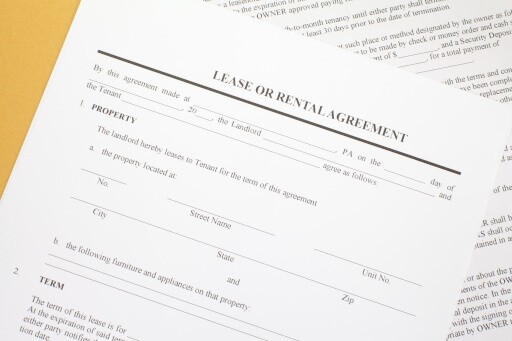
Attracting tenants and maintaining occupancy is essential to owning a successful rental property. There are a variety of ways to do so, such as offering rent concessions. To help you decide if you should offer a rent concession, here’s what to know:
- What is a rent concession?
- Types of rent concessions
- When to use rent concessions
- Disadvantages of rent concessions
- How to add a rent concession to your listing on Apartments.com
What Is a Rent Concession?
A rent concession is an adjustment or compromise a property manager or landlord makes to lease terms to attract tenants. They are also called move-in specials or rent specials. The rent concession is typically a one-time temporary incentive that benefits tenants so they are persuaded to sign or renew a lease. One of the main reasons landlords use rent concessions is to fill vacancies or retain tenants. The longer a unit sits vacant, the less profit you will make as a landlord. The idea is that the money required for a rent concession is far less than the overall expense of having a vacancy.
Rent concessions are an important tool for landlords because it can help solve problems and provide benefits. Some of the most common benefits are:
- Attracting new tenants
- Retaining tenants
- Filling prolonged vacancies
- Being more appealing than other rentals
- Building a better relationship with tenants
Types of Rent Concessions
A concession can take the form of a rebate, discount, monetary compensation, or a physical good or service. A landlord will advertise the rent concession (or negotiate the terms of a lease) to attract potential tenants or retain current tenants. Rent concessions can be used on a one-time, monthly, or yearly basis.
Although rent concessions are given at the landlord’s discretion, it is common for tenants to ask for a concession. This results in a negotiation based on the tenant’s needs and the landlord’s preference. Although rent concessions typically involve a material item or reduced cost on the tenant’s end, landlords can get creative to avoid vacancies. For example, some landlords will give potential renters surveys to see what concessions might work best.
Here are some common examples of rent concessions:
- Free (deferred rent) or prorated rent for the first month
- Reduced rent for a one-year lease
- Waived fees, such as move-in fees, pet fees, etc.
- Reduced or waived security deposit
- Updated décor, new appliances, and various renovations
- Allowing a wall or walls to be painted
- Pay for moving costs (a landlord will pay for one cost of moving, such as a moving van or storage locker)
- Pay for broker’s fee
- Free use of on-site amenities that are typically paid for, like parking, laundry, or a storage unit
- Free internet or other utilities
These are just a few of the common rent concessions landlords use. There are several types of rent concessions you should be aware of as a landlord, especially if you’re leasing or buying a property for the first time.
Lease-up concessions
Lease-up concessions are rent concessions that are part of the lease-up process. The lease-up process is the period when the owner is trying to lease all available units; generally, this happens with a newly constructed property, especially large residential rental buildings. These concessions allow landlords to lease their rental property quickly so it can reach capacity or reach a stabilized occupancy goal where the rental property becomes profitable.
Marketing concession
This type of concession is usually used for older investment properties, such as a renovated building. The strategy is to market the property slightly above the average market rent rates, so the concession appears to bring the rate in line with the rest of the market. By doing this, it gives tenants the appearance of a reduced price. This method is acceptable as long as the property is substantially occupied and priced appropriately according to the market.
Red flag concessions
Red flag concessions are continuous concessions that are offered in a bid to keep tenants, even after the lease term ends. This is a red flag to people because it can imply issues with a property where a landlord has to offer these kinds of concessions in order to avoid vacancies. To keep your concession from being considered a red flag to renters, be careful when offering concessions and avoid doing more than necessary.
When to Use Rent Concessions
Deciding when to use rent concessions can be tricky, but the most common time to use them is to attract potential tenants to a vacant property. This tactic is often used when a landlord is opening a new, large rental property, experiencing a slow market, or simply having trouble finding tenants.
Along with attracting prospective tenants, you might use a rent concession to encourage current tenants to renew their lease. You could also use rent concessions to provide your tenant with a discount on rent if you decide to renovate a tenanted unit.
Resident retention is one of the best ways to keep your rental property profitable. If you have a reliable tenant, then it might be a good idea to provide them with a small concession so they will stay. If you discover you have frequent vacancies, consider using a rent concession or another form of tenant retention.
Consider when you are offering a rent concession as well. For example, if there is high demand, then you might not need to offer a rent concession if you are getting applicants. However, if demand is weak in your area, or if comparable properties around you are offering rent concessions, then you may need to do so as well. It all depends on the market and properties around you.
Disadvantages of Rent Concessions
Although rent concessions attract tenants quickly and can improve tenant retention, there are some disadvantages. Offering a rent concession could create an expectation on the tenant’s behalf that you will always offer some type of concession. Some rent concessions will be very hard to take away and tenants might want to keep the rent concession after their lease ends. For example, if you give a tenant free laundry use or free parking for a year, they might ask for the rent concession to be applied to the new lease. If you don’t agree to add the concession to the renewed lease, they could decide to move out. Similarly, if you offered a reduced rent when they signed, a tenant might ask to keep the discounted price. As a landlord, you can negotiate and agree to keep the reduced rent price but use your discretion.
Using rent concessions is also risky. Although it’s unlikely to happen with proper screening, a tenant might cause property damage, pay rent after it’s due, or abandon the property, which could result in eviction. If any of these scenarios happen then you have less money to deal with them because of the concession. For example, if you used a free deposit as a rent concession, you risk not having money set aside for repairs.
You can use your lease to protect yourself while using rent concessions. Include when the rent concession will end and potential circumstances where the concession could be revoked in the lease. You should also send tenants a notice of increase a few months before their lease expires if you previously offered a reduced rent.
In addition, there are considerations to rent concessions when it comes to landlord insurance. Depending on what concessions you offer, it can change the coverage of your insurance. It depends on what insurance you have as well as what coverage you have.
Each concession can have a drawback, but you have to decide if the potential gain is greater than the potential loss. For instance, if you offer one month’s free rent, you will have no income from that property for the first month. However, offering a free month means you can charge a higher monthly rent price to compensate. If you find the benefit of attracting tenants to be more important than the potential drawbacks, concessions might make sense. In addition, that new tenant might stick around for even longer and renew their lease.
How to Add a Rent Concession to Your Listing on Apartments.com
If you choose to offer rent concessions and list your rental property on Apartments.com, you can easily add the concession to your listing. Here's how:
-
Log in: Access your Apartments.com account from the homepage.
-
Navigate to properties: Click on “Properties and Listings” in the upper left corner, then select “Properties.”
-
Select a property: Choose the property you want to update and click “Edit Listing.”
-
Access property details: Under your property’s address, click on “Property” to edit your rental property’s general information, description, and rent concessions/specials.
-
Add rent concession: Scroll to “Rent Specials.” Here, you can input your concession details:
-
Title: Give your concession a title, such as “Prorated Rent for the First Month.”
-
Start date: Select when the concession begins.
-
End date: Choose when the concession ends. When the end date of your rent concession occurs, it will no longer be shown on your listing, but you can extend the end date of your rent concession at any time by following this process again.
-
Description: Write a detailed description of the concession, such as “Prorated rent for the first month of your lease. Contact the leasing office for more information.”
-
-
Display options: If you pay for an advertising package that is Gold or above on Apartments.com, then you have the option to add your rent concession to the search results page. To do this, decide if you would like the rent concession to show up as “Discounts” or “Specials” on the search results pages. If you would not like your rent concession to show up on the search results page or on your listing, then you can select “None/Off,” and this will turn your rent specials off until you go back into your listing and turn them back on. If you don’t have access to this option, then you can turn your concession off by making the end date a past date or deleting all the information about the concession from your listing.
-
Save changes: Scroll to the bottom and click “Save” to apply your updates. After saving, your rent concession will appear on Apartments.com in 2-3 hours.

By carefully following the outlined steps, you can effectively advertise your rental property on Apartments.com with special offers and discounts, making it more competitive in the rental market. Remember to clearly define the details and duration of your concession to ensure transparency and attract interested renters. This strategic approach can help fill vacancies faster and improve overall tenant satisfaction.
Manage Payments and Add Credits with Apartments.com
Let Apartments.com help you collect payments and manage rent with ease. If you plan on offering concessions for filling vacancies, this can easily be done by applying credits on a renter's balance on Apartments.com. When a renter has a credit, it will be applied on the balance first, reducing the amount due. Credits can be added in any dollar amount, giving you flexibility for any special or concession program in mind.
This article was originally published on November 17, 2020.











